Sultry Sicily, washed by the gentle waters of the Mediterranean Sea, is an ancient land with a rich history and cultural traditions of great civilizations. It was visited by the Romans, Moors, Normans and powerful orders of knights. The real pearl of the island is the capital of Palermo - a city of contrasts, ancient architecture, flowering gardens and strong family traditions.
In Palermo, there is such an abundance of historical monuments of the Early Middle Ages that one involuntarily wonders how they could stand for such a long time? Moorish palaces, Christian temples converted from mosques, villas immersed in greenery adorn the city streets and give Palermo a unique look. The capital of Sicily is also the lair of elegant Italian mafiosi, who in our time have become another tourist highlight.
What to see and where to go in Palermo?
The most interesting and beautiful places for walking. Photos and a short description.
- Norman palace
- Cuba Palace
- Qiza Palace
- Villa Palagonia
- Palatine Chapel
- Cathedral of Palermo
- Churches of Martorana and San Cataldo
- Cathedral Monreale
- Church of San Giuseppe dei Teatini
- Teatro Massimo
- Politeama Theater
- Puppet Museum
- Palazzo Abatellis
- Archaeological Museum of Antonio Salinas
- Capuchin catacombs
- Gate of Porta Nuova
- Gate of Porta Felice
- Fountain of Pretoria
- Botanical Garden of Palermo
- Mondello beach
norman palace
The rulers of Sicily have been housed in the Norman Palace since the 7th century. First, the Arab caliphs, and after the conquest of the island, the Norman kings. In the XII century, the Palatine Chapel was built, which was decorated with magnificent Byzantine mosaics. The second wave of popularity of the palace falls on the 16th century, as the Spanish Viceroy chooses it as his residence. In this regard, a large-scale reconstruction of the building was carried out. Since the middle of the 20th century, the regional parliament of the island of Sicily has been sitting here.

Cuba Palace
The country residence of the kings of Sicily, built in the distant XII century. The architecture of the building absorbed much of the Arabic style of construction, as the customer really liked the oriental style. The palace really resembles a cube, decorated with traditional Moorish arches and Arabic script. Currently, the complex houses a museum of Arab culture.

Qiza Palace
Another bright representative of the Arab-Norman architectural style. The palace was built in the 12th century for King William I. The building was used as a hunting villa. As a result of numerous reconstructions, the building has practically lost its unique appearance, but acquired the features of medieval European architecture. The palace is surrounded by a magnificent lush park. Nowadays, a museum dedicated to Islamic art operates on the territory of the Qiza Palace.
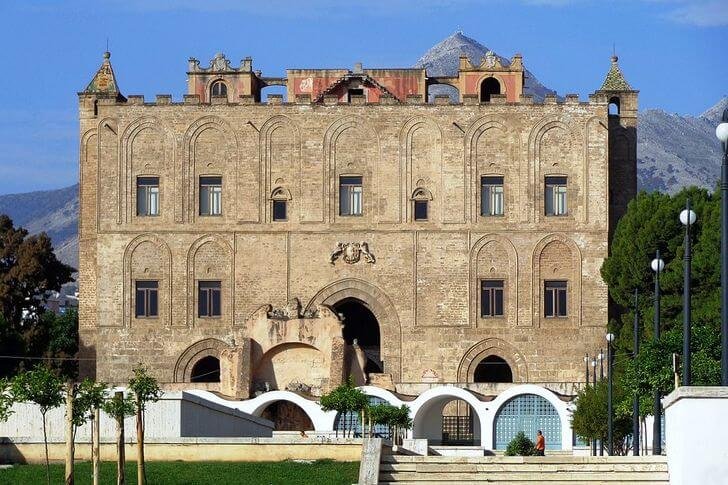
Villa Palagonia
The villa is located about 15 km. from Palermo. It was erected at the very beginning of the 18th century in the Baroque architectural style, designed by Tommaso Napoli. The customer was one of the first representatives of the Sicilian nobility. At the end of the 19th century, the building was acquired by another noble family. The villa is still privately owned, so access to its territory is limited.

Palatine Chapel
The personal chapel of the Sicilian kings, located in the Norman Palace. The chapel appeared in the XII century under the ruler Roger II. The temple is a small compact basilica with unique interiors that have survived to this day. Marble-granite mosaic of the floor and ceiling painting deserves special attention. These elements of interior decoration have come down to us in their original form.

Cathedral of Palermo
Medieval temple, which absorbed elements of various architectural styles - Gothic, Moorish style, classicism. The history of the building began in the 4th century with a small early Christian church. Arab, Spanish and even German craftsmen worked on the construction, decoration and restoration of the cathedral. For many centuries, the rulers of Sicily were crowned here. Inside the cathedral are stored real treasures and works of art.
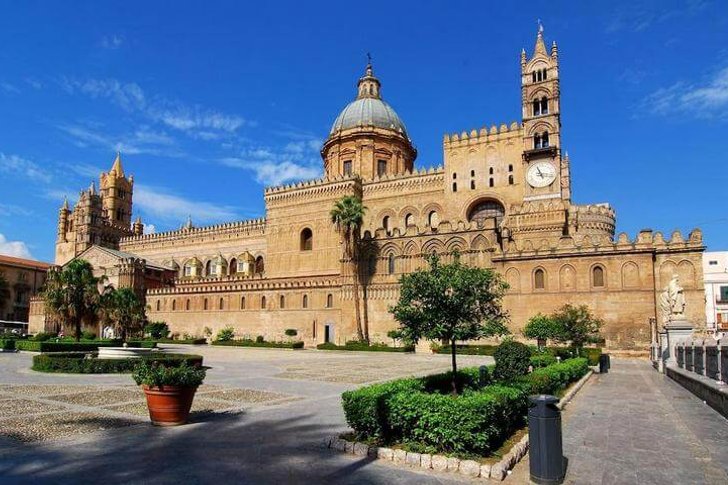
Churches of Martorana and San Cataldo
The Church of San Cataldo is a unique monument of Arab-Norman architecture of the 12th century. Outwardly, it is somewhat reminiscent of a mosque with a high minaret. At the moment, the brothers of the monastic order of the Holy Sepulcher of Jerusalem own the temple. Nearby is the temple of Martoran, also built in the XII century. The Byzantine mosaic that adorns the interior of Martorana is the oldest on the island of Sicily. Both churches are included in the UNESCO World Heritage List.
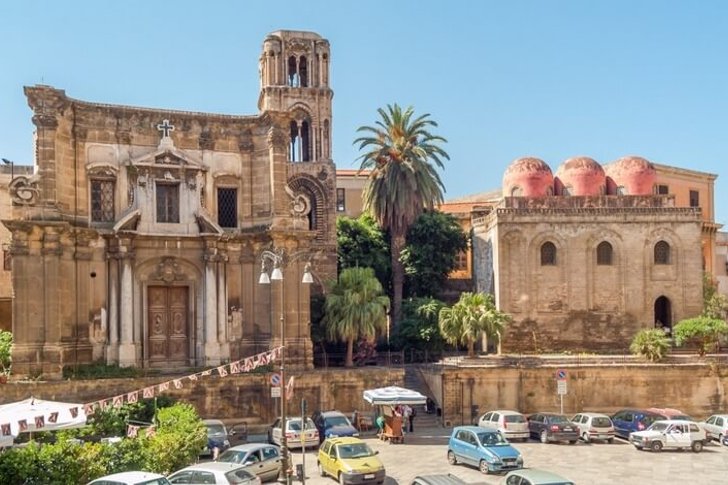
Cathedral Monreale
Cathedral, located in the suburbs of Palermo - the city of Monreale. The interior of the temple is decorated with thematic mosaics with scenes from the New and Old Testaments. The cathedral was erected under the ruler Wilhelm II the Good at the end of the 12th century. At the same time, a Benedictine monastery was built at the temple. The building continued to be completed and rebuilt until the beginning of the 19th century, but in many ways it retained its original medieval appearance.
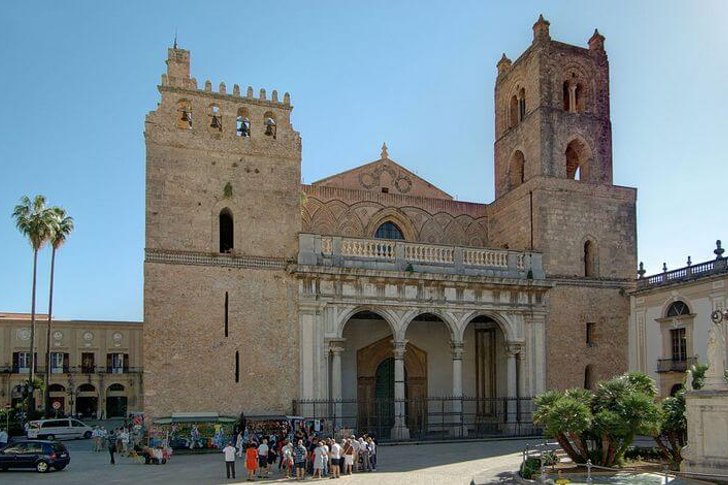
Church of San Giuseppe dei Teatini
The temple is considered a characteristic representative of the Sicilian Baroque architectural style. Construction began in the 17th century. The project was developed by the Genoese architect D. Besio, who was a member of the Catholic Order of Theatines. The interior is richly decorated with marble, bas-reliefs, decorative elements, columns, ceilings and enfilades are carved from solid slabs. Also, the church is decorated with a magnificent marble floor.

Teatro Massimo
One of the largest theaters in Europe and the largest opera stage in Italy, where the famous tenor Enrico Caruso and composer Giacomo Puccini performed. "Massimo" in Italian means "greatest, greatest." The construction of the theater began at the end of the 19th century, the premiere performance was the opera by the master G. Verdi "Falstaff". The predominant architectural style is classical with elements of the ancient Greek manner.

Politeama Theater
The building is in a pompous neoclassical style, reminiscent of ancient Roman temples. The theater was built in 1891 by the architect D. D. Almeida. The name "Politeama" indicates that works of various genres are performed on the stage. In 2000, a reconstruction was carried out, part of the premises went to the Palermo Gallery of Modern Art. Since 2001, the Sicilian Symphony Orchestra has performed on the stage of the Politeama.

Puppet Museum
Puppet Museum founded in 1975. The collection consists of several thousand copies brought from all over the world. Dolls clearly demonstrate the features of various nations and peoples. Italians have always attached particular importance to theater and acting. The founder of the Puppet Museum A. Pasqualino also established the Morgana Festival dedicated to the art of puppet theater.
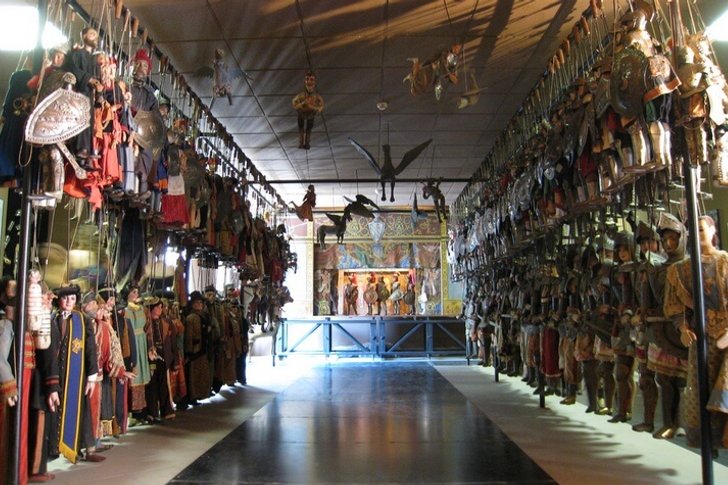
Palazzo Abatellis
Palace of the 15th century, commissioned by Captain F. Abatellis, designed by architect M. Karnelivari. The building was built in the Gothic Catalan style. The building was significantly damaged during the Second World War, but was later restored. Today, the palace houses the collection of the Sicilian Regional Art Gallery. Here exhibits of the XII-XVIII centuries are collected.
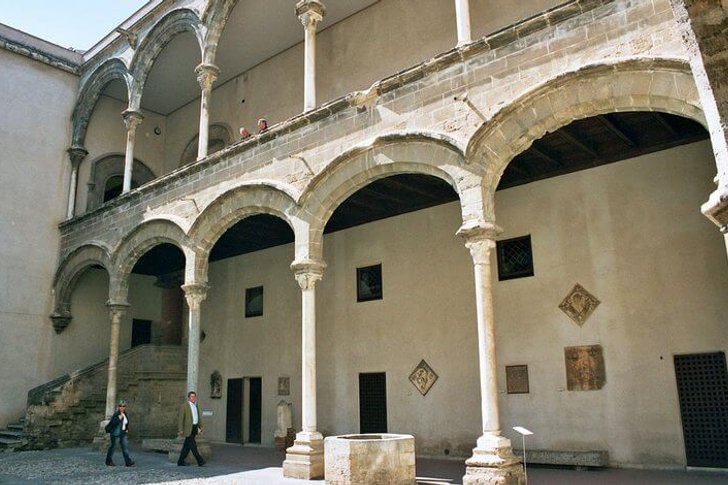
Archaeological Museum of Antonio Salinas
The museum is housed in a 17th-century building that was built for a monastery and a church. But in 1866, a law was passed that abolished religious orders, so the building was placed at the disposal of the National Museum. The funds were gradually replenished from private collections, works of art from monasteries, churches, city universities. One of the most valuable exhibits is a panel from the 3rd century AD. depicting Orpheus.

Capuchin catacombs
Underground rooms located in the cellars of the Capuchin monastery, where more than 8 thousand people are buried: monks, nobles, famous and revered citizens, artists and other important people for Sicily. This necropolis is quite unusual, as the dead bodies are on display rather than resting in closed crypts. The temperature of the catacombs prevents decomposition, so the bodies are in a "canned" state.
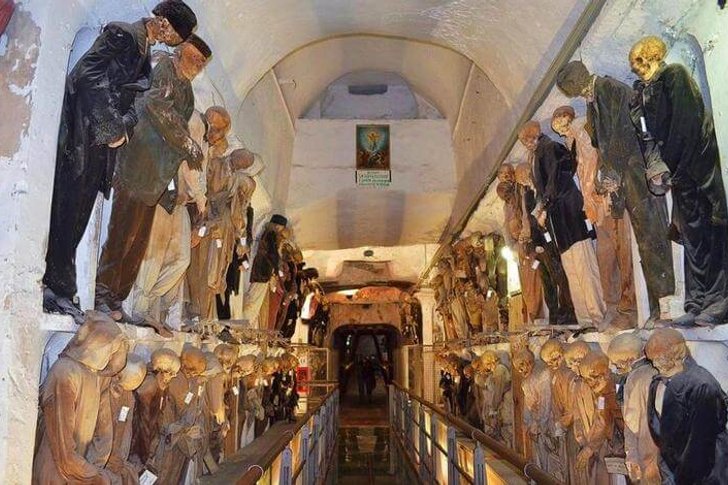
Gate of Porta Nuova
A 16th-century structure built to commemorate the victory of Charles V in the Tunisian War. The gate is located at the entrance to the historical part of Palermo. Porta Nuova is the Sicilian "arch of triumph" that adorns the city and at the same time serves as a landmark. Unfortunately, the gate has not survived to this day in its original form, as it was blown up in 1667. The master Gaspar Garcio worked on the restoration of the historical appearance of the building.
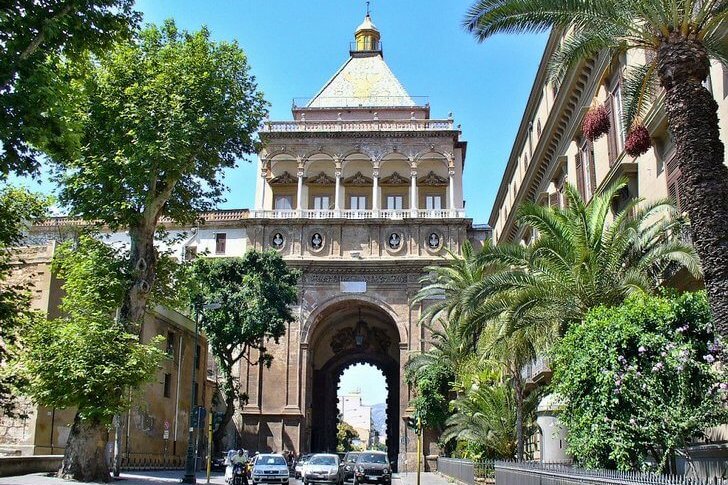
Gate of Porta Felice
The gate was built in the 17th century. They were used to enter the city from the coast. The structure was built in the Baroque and Renaissance styles, the upper part is crowned with the figures of two eagles and the coat of arms of the Spanish rulers. During the bombing of World War II, only ruins remained of Port Felice, but as a result of painstaking and thorough reconstruction, the building was restored.

Fountain of Pretoria
A huge fountain that occupies almost the entire space of the square of the same name. The sculptural composition was created in the 16th century, gradually over the centuries it became very dilapidated and fell into decay. In the period 1998-2003, the fountain was restored. The result is a composition of three large circles-bowls, surrounded by stone mythological characters, animals and monsters.

Botanical Garden of Palermo
The favorable climate and suitable conditions have made it possible to create a botanical garden in Palermo with a rich variety of flora. It appeared at the end of the 18th century at the botanical department of the Royal University. Initially, medicinal plants were grown in a small area, but very soon there was not enough space and the garden had to be expanded. Now the park covers an area of about 10 hectares.

Mondello beach
The urban beach of Palermo, located on the slopes of Mount San Pellegrino, surrounded by orchards. The place is popular with tourists because of the clean water, white sand, convenient location and thoughtful infrastructure. The length of the beach is only two kilometers, so in the high season there is practically no free space, from a large number of people who want to sunbathe under the Sicilian sun.
